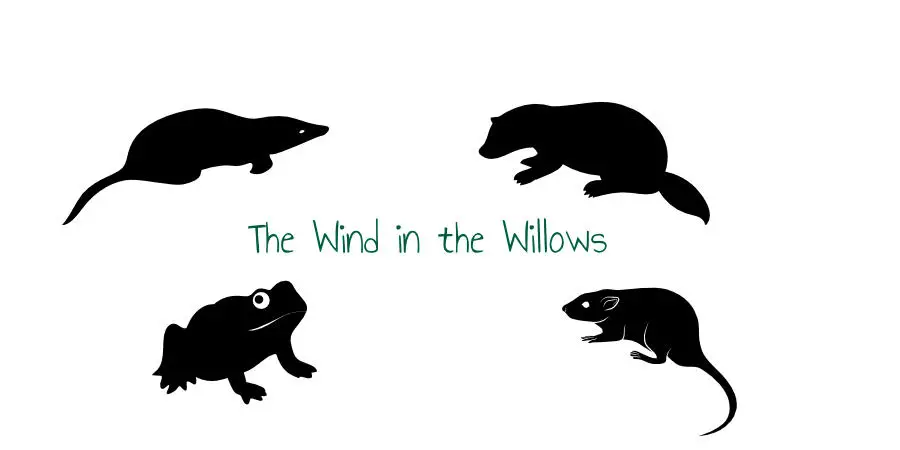What Age Group Should Read The Wind in the Willows?
The Wind in the Willows is one of the best children’s books of the 20th century. Kids and adults enjoy the lyrical prose and adventures of Mr. Toad, Water Rat, Mole, and Mr. Badger. But for what audience is The Wind in the Willows aimed?
The Wind in the Willows is suitable for children older than 10. Kenneth Grahame wrote the book at the beginning of the 20th century, and many words and phrases are hard to follow for younger readers. Moreover, some critics suggest The Wind in the Willows isn’t a children’s book.
You might be surprised that some young kids can’t see the magical side of The Wind in the Willows. It turns out this book isn’t that easy to read and understand after all. That’s why I’ll present the best reading age for this book and discuss if it’s a suitable children’s book.

Optimal Reading Age for The Wind in the Willows
For many, The Wind in the Willows offers the best escapist themes and topics. The richly described natural world where animal friends live through various mishaps sounds like a perfect book for young readers. But how true is this?
The optimal reading age for The Wind in the Willows isn’t that young. The best age to start is around ten and up. You may hear parents saying their kid is six and loved this book. However, these are rare cases.
Even if a six-year-old enjoyed The Wind in the Willows, it’s more likely they loved it because of the funny episodes or the characters. But they probably didn’t understand many things in the book. Don’t worry because there’s nothing wrong with that.
The fact is that Kenneth Grahame wrote the book in 1908 (Edwardian period). Many words used back then are no longer used. Naturally, kids won’t know the meaning of some of these words. Plus, complex sentences and passages aren’t strangers to this book.
Take, for instance, this passage from the book where the police sergeant says: Rouse thee, old loon, and take over from us this vile Toad, a criminal of deepest guilt and matchless artfulness and resource. Watch and ward him with all thy skill; and mark thee well, greybeard, should aught untoward befall, thy old head shall answer for his—and a murrain on both of them!
Although it’s a satirical take on how some people used to speak, many younger readers wouldn’t understand almost anything.
Lexile and ATOS Level of The Wind in the Willows
Probably the two most essential reading comprehension charts are Lexile and ATOS. Many schools and publishers rely on these two charts to measure what students should be able to read at that level (or in that grade).
Lexile Level also measures how difficult it is to read a text based on its vocabulary and syntax. Therefore, Lexile Level for The Wind in the Willows is 1060, which means it’s a Grade 7 reading material.
Moreover, the ATOS level for The Wind in the Willows is 8.2, placing it in the Grade 8 reading material. So, based on objective parameters, The Wind in the Willow is suitable for older kids (from 12 and up).
However, most kids who are ten and up could still enjoy the book because of the action and funny episodes—which these reading-level tests don’t measure. Also, modern editions of the book come with illustrations, which helps children understand the plot. But if your ten-year-old doesn’t “get it,” it’s certainly not their fault.
Check my article Why Do Books Have Images? to see other benefits of illustrated children’s books!
The Wind in the Willows: A Children’s Book?
Over the years, many theories and articles have been written about The Wind in the Willows. Arguably the most common question for these theories has to do with this book being a children’s book. In fact, Grahame never stated it’s a children’s book.
As we’ve seen above, The Wind in the Willows isn’t aimed at really young readers. Firstly, the book occasionally uses strong language and insults, like “ass,” that modern publishers often remove.
Critics also question if the four main characters are even animals. Although they’re called Mr. Toad, Mr. Badger, Mole, and Water Rat, they all act like human beings. They live in houses, drive cars, and comb their hair. Suddenly, it’s a story about four Edwardian gentlemen instead of animal friends.
In his paper, Peter Hunt also suggested that The Wind in the Willows is a commentary on the Edwardian class system since the four characters belong to an upper-English class. According to him, the book contains many subtexts only adult readers can see.
Jane Darcy also wrote how books like these represent Englishness myths when they present the natural and rural world that isn’t there anymore. Not many kids can relate to country life in our modern society.
Therefore, The Wind in the Willows wasn’t originally aimed at children, but it can still be enjoyable for many kids worldwide.
Themes The Wind in the Willows Covers
Younger readers can still learn many things from The Wind in the Willows, even though it contains deeper symbolic meaning. Firstly, the book puts a strong emphasis on friendship. The three friends try to keep Mr. Toad safe throughout the book.
The Wind in the Willows also discusses what it means to be curious. It’s a motivating factor for young readers. Who could forget this line from the book: and still, as he looked, he lived; and still, as he lived, he wondered.
Lastly, the book represents the ultimate pastoral scenery. Through the wonderful depiction of nature, young readers can start to appreciate the natural world and see beauty in it. It’s an inspiration for kids to go out and appreciate all the living things.
Final Thoughts
If you want your child to read Grahame’s The Wind in the Willows, it’s best to wait until they’re at least ten. Many words and phrases from the book aren’t used nowadays, and younger readers might struggle with the plot.
Some critics don’t even agree The Wind in the Willows is a children’s book. However, young readers can still enjoy the book and learn the following lessons:
- The importance of friendships
- Being curious
- Appreciation for nature
Sources
- Britannica: The Wind in the Willows
- Gutenberg: The Project Gutenberg eBook of The Wind in the Willows, by Kenneth Grahame
- Scholastic: Lexile Levels: What Parents Need to Know
- Renaissance: ATOS
- Learner Books: The Wind in the Willows
- MVCC Library: Children’s Literature: What Is a Lexile Ranking?
- Mid-Columbia Libraries: Books by Grade Level
- Literary Hub: The Wind in the Willows Isn’t Really a Children’s Book
- Project Muse: Dialogue and Dialectic: Language and Class in The Wind in the Willows
- Project Muse: The Representation of Nature in The Win in the Willows and The Secret Garden
- JSTOR: Pottering About in the Garden: Kenneth Grahame’s Version of Pastoral in “The Win in the Willows”
- OUTblog: What on Earth Is The Wind in the Willows?
- Quora: Is ‘The Wind in the Willows’ Suitable for a Nine-Year-Old Without the Help of an Adult?
- Well-Trained Mind: What Age for Wind in the Willows?
- Litkidz: The Wind in the Willows






